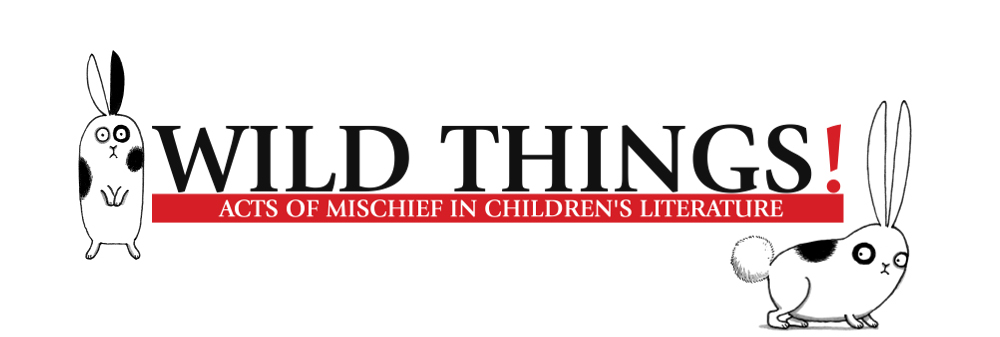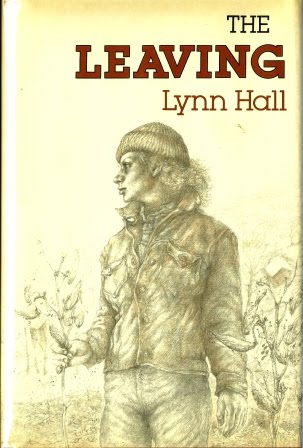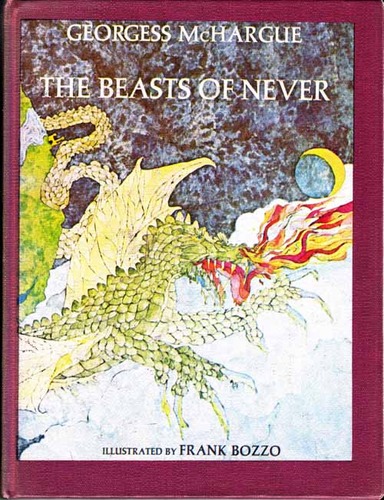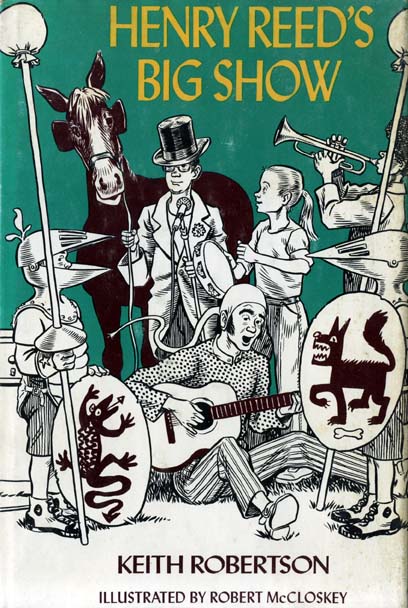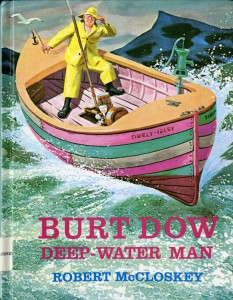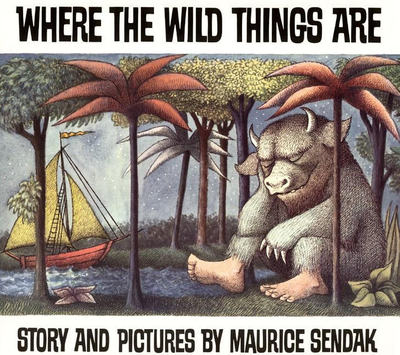Premature Exits of Children’s Lit
[This is one of a series of posts in which we are sharing stories from our upcoming book (Wild Things: Acts of Mischief in Children’s Literature) that were cut from the original manuscript.]
Just the other day, we took a look at the precocious ones of children’s literature, those who started writing at a very young age. But what about those who left the field early — and, in some cases, suddenly?
At one point during our research for this book, we asked authors: What would it take, if anything, to drive you away from this field? The answers ranged from jaded (the dozens of acquisitions meetings required to publish a book today, financial security, the challenges of writing in the digital age) to light-hearted (senile dementia, Colin Firth as Mr. Darcy making me a better offer) to earnest (having no stories left for young readers). One author-illustrator told us she needs to make stories for her own happiness. Publishers might not publish them, she said, but I would still make them.
But today we look at four instances of more unusual early departures.
In doing so, Lois Duncan doesn’t quite fit in. And that’s because she isn’t someone whose writing career is over, per se. But Duncan, who entered the field at a young age and would later win the Margaret A. Edwards Award for lifetime achievement, had her reasons for putting an end to the fictional suspense writing for which she was best-known and highly praised. In fact, there was a recent (May 2014) BuzzFeed piece about Duncan’s story.
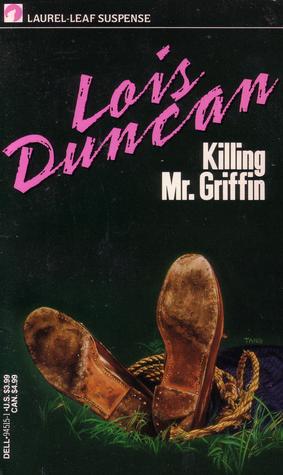 Duncan earned great fame and success with her young adult suspense novels, such as Down a Dark Hall (1974), Summer of Fear (1976), Stranger with My Face (1981), and Killing Mr. Griffin (1978), the latter considered a groundbreaking, taboo-shattering book. However, Duncan quit writing suspense books at the top of her game after her youngest daughter was murdered. Several strange coincidences existed between events surrounding her daughter’s death and scenes in the last book they worked on together, Don’t Look Behind You, as discussed in Duncan’s memoir, Who Killed My Daughter? It was at this time she vowed to never write a YA suspense novel again (the one exception being the title Gallow’s Hill, published in 1997).
Duncan earned great fame and success with her young adult suspense novels, such as Down a Dark Hall (1974), Summer of Fear (1976), Stranger with My Face (1981), and Killing Mr. Griffin (1978), the latter considered a groundbreaking, taboo-shattering book. However, Duncan quit writing suspense books at the top of her game after her youngest daughter was murdered. Several strange coincidences existed between events surrounding her daughter’s death and scenes in the last book they worked on together, Don’t Look Behind You, as discussed in Duncan’s memoir, Who Killed My Daughter? It was at this time she vowed to never write a YA suspense novel again (the one exception being the title Gallow’s Hill, published in 1997).
“My value system changed,” Lois told us. “My desire to write to entertain was replaced by a driving need to use my writing skills in order to uncover the identity of my own child’s killers, the motive behind her murder, and the motive certain police officers had for covering it up. … circumstances forced me to write using the left side of my brain, when the right side had previously been dominant. I’m still able to switch back to the right side if I choose to, as I did when I wrote News for Dogs and Movie for Dogs, the two sequels to Hotel for Dogs. But the non-fiction work I’m doing now seems more important. I’m at a point in life where I have to sort out my priorities — I no longer have an endless stretch of time in front of me. {And} my focus is concentrated on real life horror rather than fictional game-playing.”
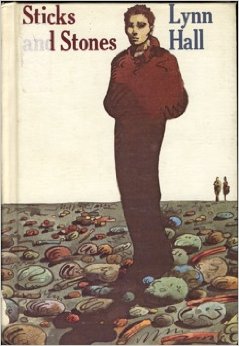 Then there’s the case of Lynn Hall. Mention her name today and you may hear: “Lynn Hall? I always loved her books. Whatever happened to her?” Hall penned nearly a hundred books for children of all ages and teens, including Sticks and Stones, one of the first young adult novels to address the subject of homosexuality, and The Leaving, winner of the 1981 Boston-Globe Horn Book Award for fiction. Hall was both a critical and popular success, primarily writing books that depicted animals in an unsentimental style. For twenty years, Hall published an amazing two to four books a year — then simply stopped. It’s now been nearly twenty years since we’ve been treated to one of her animal tales, and why she left writing remained a mystery of children’s literature. Until now, that is. We had an opportunity to ask her about her departure from writing. And her answer is pretty unequivocal: It was simply time to stop.
Then there’s the case of Lynn Hall. Mention her name today and you may hear: “Lynn Hall? I always loved her books. Whatever happened to her?” Hall penned nearly a hundred books for children of all ages and teens, including Sticks and Stones, one of the first young adult novels to address the subject of homosexuality, and The Leaving, winner of the 1981 Boston-Globe Horn Book Award for fiction. Hall was both a critical and popular success, primarily writing books that depicted animals in an unsentimental style. For twenty years, Hall published an amazing two to four books a year — then simply stopped. It’s now been nearly twenty years since we’ve been treated to one of her animal tales, and why she left writing remained a mystery of children’s literature. Until now, that is. We had an opportunity to ask her about her departure from writing. And her answer is pretty unequivocal: It was simply time to stop.
“I’d written full time for thirty years and part time for another four,” she told us. “I had 82 published books and several who didn’t make it into print. I’d reached the point where editors were saying, ‘Ho hum, here comes another Lynn Hall book.’ Critics and reviewers were saying, ‘Ho hum, here comes another Lynn Hall book.’ I was saying ‘Ho hum, here comes another Lynn Hall book.’”
Hall acknowledges she didn’t feel typecast or uncomfortably boxed-in as an author. “Walter Farley once told me that he was so typecast to Black Stallion books that when he tried to write a dog story, The Great Dane Thor, it didn’t sell at all, and toward the end of his career he had to include ‘Black Stallion’ in the titles of books that had nothing to do with the black stallion. He really was typecast, and he hated it.” But no typecasting plagued her, she asserts. She wrote 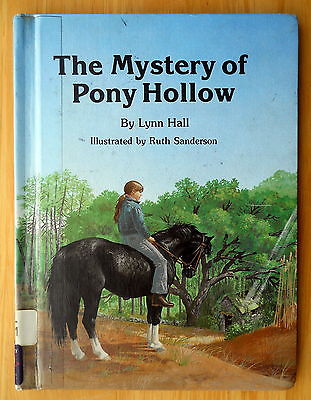 many different types of “Lynn Hall” books, as she calls them, over the years (dog stories, horse stories, achingly real tales of personal growth, mystery tales – all for different ages), “so if I was boxed in, it was a pretty roomy box.”
many different types of “Lynn Hall” books, as she calls them, over the years (dog stories, horse stories, achingly real tales of personal growth, mystery tales – all for different ages), “so if I was boxed in, it was a pretty roomy box.”
Her creativity simply ran dry: “{A}fter so many books, it had become impossible to keep coming up with fresh new ideas, plots, characters. I found I was repeating myself. And when I tried writing edgier, more timely books, my editor rejected them saying they didn’t sound like Lynn Hall books.” But, she’s quick to add, she doesn’t necessarily feel she was born to be a writer, as many authors assert. “{I}t was more a matter of looking for a way to live according to my nature, than an overwhelming urge to write. I knew…I didn’t want to be married, I didn’t want to spend my life working in an office, I wanted to be my own boss and to live in the country. After trying a few other things that didn’t work, like breeding chinchillas and painting animal portraits, I stumbled onto writing children’s books, it was a perfect fit, and I ran with it. I’d seen a horse story in a bookstore window, written by a local author, and when I leafed through it I could see that the writer knew nothing about horses. I suddenly knew that this was something I could do, and do well. Simple as that. Probably if I’d been a more normal writer, who grew up loving writing, it would have been harder for me to retire.”
Indeed, there’s a lot to be said for retiring at the top of one’s game.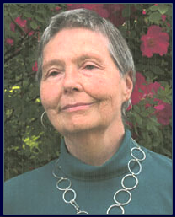
Georgess McHargue, pictured right, wrote over twenty titles for children and adults in the sixties and seventies, mostly folklore and fantasy tales, such as the beloved Stoneflight (1975), the story of a young girl named Janie who uses her power to animate the stone animals that adorn New York City’s buildings, all in an effort to find escape from her parents’ quarreling. McHargue was nominated for a National Book Award for her first book, The Beasts of Never (1968), as well as The Impossible People: A History Natural and Unnatural of Beings Terrible and Wonderful (1972), illustrated by Frank Bozzo. The latter examined the origins and evolution of various mythological beings in European and American folklore.
This was an author whose career was doing great. And then she seemed to disappear.
“I became obsessed with the lives of women rulers (dozens of them),” she told us in 2010, “that no publisher would support, so {I} started my own nonprofit to remedy the omission and actually published one book in an intended series that fizzled, to put it kindly.” She also served briefly as the CEO of a million-dollar archaeological company.
Did she regret leaving the field of children’s books?
“To tell the truth it’s like an arrow in my gut to hear that people wonder where I went,” she told us, shortly before her death in the summer of 2011. (Her obituary can be read here.)
One could argue that perhaps author/illustrator Robert McCloskey, though he led a highly-acclaimed, award-winning career, had some more books in him. He wrote and illustrated eight, created the illustrations for ten more, and brought readers many beloved titles that will stand the test of time, but he chose to stop illustrating in 1970 with Henry Reed’s Big Show, 33 years before his death.
Gary Schmidt addresses this early departure from children’s literature in his biography of the artist, noting that, after the publication of Time of Wonder, McCloskey’s editor, May Massee, had asked him to illustrate Keith Robertson’s Henry Reed, Inc., published in 1958. McCloskey then went on to illustrate three more Henry Reed books, ending with Henry Reed’s Big Show in 1970. By that time, Schmidt writes, “Viking had merged into a corporation, and McCloskey was becoming dissatisfied with the look of the books.” Adds Schmidt,
Since Make Way for Ducklings, each of McCloskey’s picture books had won a Caldecott Medal or Caldecott Honor; Burt Dow won neither. The Caldecott winner for 1963, the year Burt Dow was published, is significant in that it suggests that new trends were taking hold of children’s literature in the early 1960s: Maurice Sendak’s Where the Wild Things Are. Where McCloskey had always pictured childhood as a time of exuberant joy and wonder, Sendak pictured it was a dangerous period, where the child was prey to destructive impulses, internal fears, and almost uncontrollable frustrations. Where McCloskey depicted the unity, strength, and love that comes from family, Sendak was to depict the child’s alienation from the adult world. The two visions could not have been more different, and for at least the next two decades it would be Maurice Sendak’s vision that would dominate children’s literature.
In 1979, when asked about his future plans, McCloskey noted that he felt he had thoroughly explored the realm of picture books and that he was interested in film and television puppet shows. According to his daughters, he indeed took up puppeteering at this time and also continued to paint – not paintings for children’s book illustrations, but paintings of his family, his travels, Maine scenes, and images of birds and other animals, the type of paintings he had done in between children’s book projects during his career. His daughter Jane’s 2011 publication about her father’s life and work also notes he suffered a nervous breakdown while spending time with his family in Mexico City and just before Jane herself turned eleven.
Sure enough, the fifth and final Henry Reed title, Henry Reed’s Think Tank, was published in 1986 with no illustrations from McCloskey, though he had been asked to take on the project.
Sources
Bloch, Jessica. “Daughters of children’s author share his ‘unknown’ work.” Bangor Daily News. 6 June 2010. <http://bangordailynews.com/2010/06/06/news/hancock/daughters-of-childrens-author-share-his-unknown-work/>.
Duncan, Lois. Email interview. 23 July 2010.
Fannin, Alice. “(John) Robert McCloskey.” American Writers for Children, 1900-1960. Ed. John Cech. Detroit: Gale Research, 1983. Dictionary of Literary Biography Vol. 22. Literature Resource Center. Web. 19 Dec. 2010.
Hall, Lynn. Email interview. 17 and 19 August 2010.
McCloskey, Jane. Robert McCloskey: A Private Life in Words and Pictures. Kittery Point, Maine: Seapoint Books, 2011.
McHargue, Georgess. Email interview. 30 September 2010.
Schmidt, Gary. Robert McCloskey. Boston: Twayne Publishers, 1990.
Silvey, Anita, ed. Children’s Books and Their Creators. New York: Houghton Mifflin, 1995.
